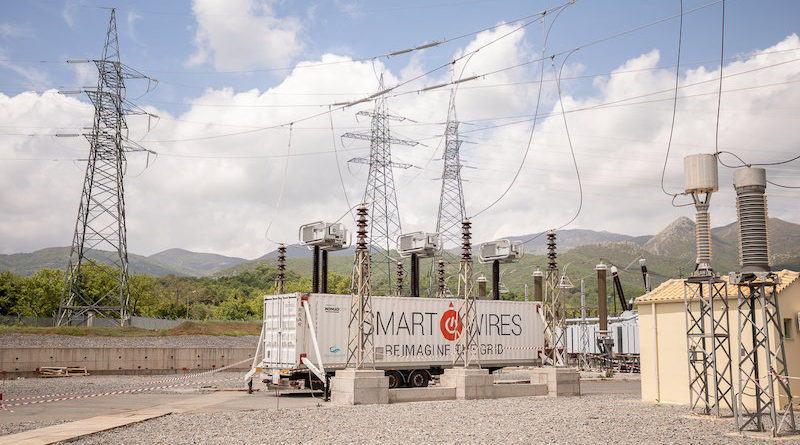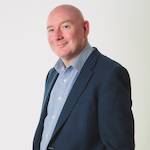
Optimising power networks to accelerate the energy transition
The last twenty years has seen a major change in the energy landscape. Decarbonising our energy systems and economies to protect the planet is now the primary long-term target for European energy policy. The Green Deal sets clear and ambitious targets for Europe, with 50 or even 55% GHG reductions in 2030, up from the current 40%. The electricity sector has shown remarkable innovation and technical excellence in the successful development and safe integration of large-scale, cost-effective renewables into a reliable grid.
Electricity can continue to play a leading role in the energy transition and can support the decarbonisation of other sectors. However, three challenges will need increased focus:
- › Affordability and competitiveness for consumers and industries competing in a global marketplace.
- › Minimising impacts on sensitive environments and communities.
- › Dealing with complex technical challenges arising from a system with very high levels of renewable generation.
Radically increasing the efficiency of the power grid using modern technology offers the opportunity to address all of these issues. The value available from a truly efficient network is the ability to transport enough additional renewable energy to power ten or more large cities across Europe using today’s poles, wires and substations. This is many times more impactful than the incremental efficiency measures applied to networks in today’s regulations.
Over the past century, the power network has performed remarkably well and has enabled large volumes of energy to be instantly trans- ported from producers to consumers.
However, with the rapid growth in renewable generation, the power network has struggled to keep pace.
In many parts of Europe, the speed at which renewables can enter the market is constrained to the speed at which new electricity networks can be built. It will continue to be necessary to add more traditional grid infrastructure, but this process is slow, expensive and impacts the communities and the environment where it’s built.
Smart Wires’ technology enables power flow to be digitally controlled on the grid. This means that power can be diverted away from congested paths on to lines with spare capacity available. Recent examples in the UK and Germany have highlighted the substantial amount of spare capacity on the existing grid – often enough spare capacity to meet the needs of a large city can be released in one year.
This technology can be quickly installed within the existing network to utilize spare capacity – allowing significantly faster access for new renewable connections. It can also be relocated if the needs of the system change which minimizes the risk of stranded or underutilized assets. This delivers new capacity much cheaper than traditional solutions, reducing costs for consumers and industry.
As a digital technology, it is highly complementary to other new smart grid solutions like dynamic line rating and distributed storage.
These solutions identify additional spare capacity on the grid and provide additional flexibility around when and where power is required. By adding the ability to control power flows in real time and respond to changing circumstances, the overall impact will be transformational for our power grid.
This offers the possibility of a truly controllable, digital power grid for Europe where the network can be used to its full potential for the benefit of European citizens. The range of control available will help tackle the technical challenges that will only grow in a highly renewable grid. It will also enable fast access for new renewables at lower costs to consumers and with less intrusive new infrastructure. It is important that project developers and regulators fully weigh all these factors in detail when considering the construction of new electricity infrastructure.
Many of the difficult technical issues in this transformation will require careful work and consideration from experts. Thankfully, the European grid operators have the best talent in the world and have repeatedly shown their ability to solve the hardest problems. When it comes to the uptake of new solutions, regulation can be either a powerful accelerator or a roadblock. We recognize it will take time to streamline legacy regulatory and procedural hurdles that were designed for a world where new projects were built of steel and copper and took ten years to deliver compared with today’s solutions built from silicon and software and available in weeks.
The Clean Energy Package for all Europeans and now the Green Deal have set a bold direction towards a renewables-based, low-carbon energy system.
This year, there is an excellent opportunity to adapt the existing policy frameworks and procedures to enable a more efficient and faster delivery of the Green Deal, including the update of the TEN-E regulation, the Energy Efficiency Directive, and the Smart Grid Indicator. Platforms such as the Copenhagen Infra- structure Forum also play a key role in ensuring transparency and a collaborative approach of all stakeholders. This will support the uptake of new, proven solutions that contribute to a more flexible greener and future proof grid.
With ambition and leadership Europe can deliver vast volumes of new, fast, clean power with less environmental impact. Europe will also confirm its place as the world leader in renewables and modern power systems.




